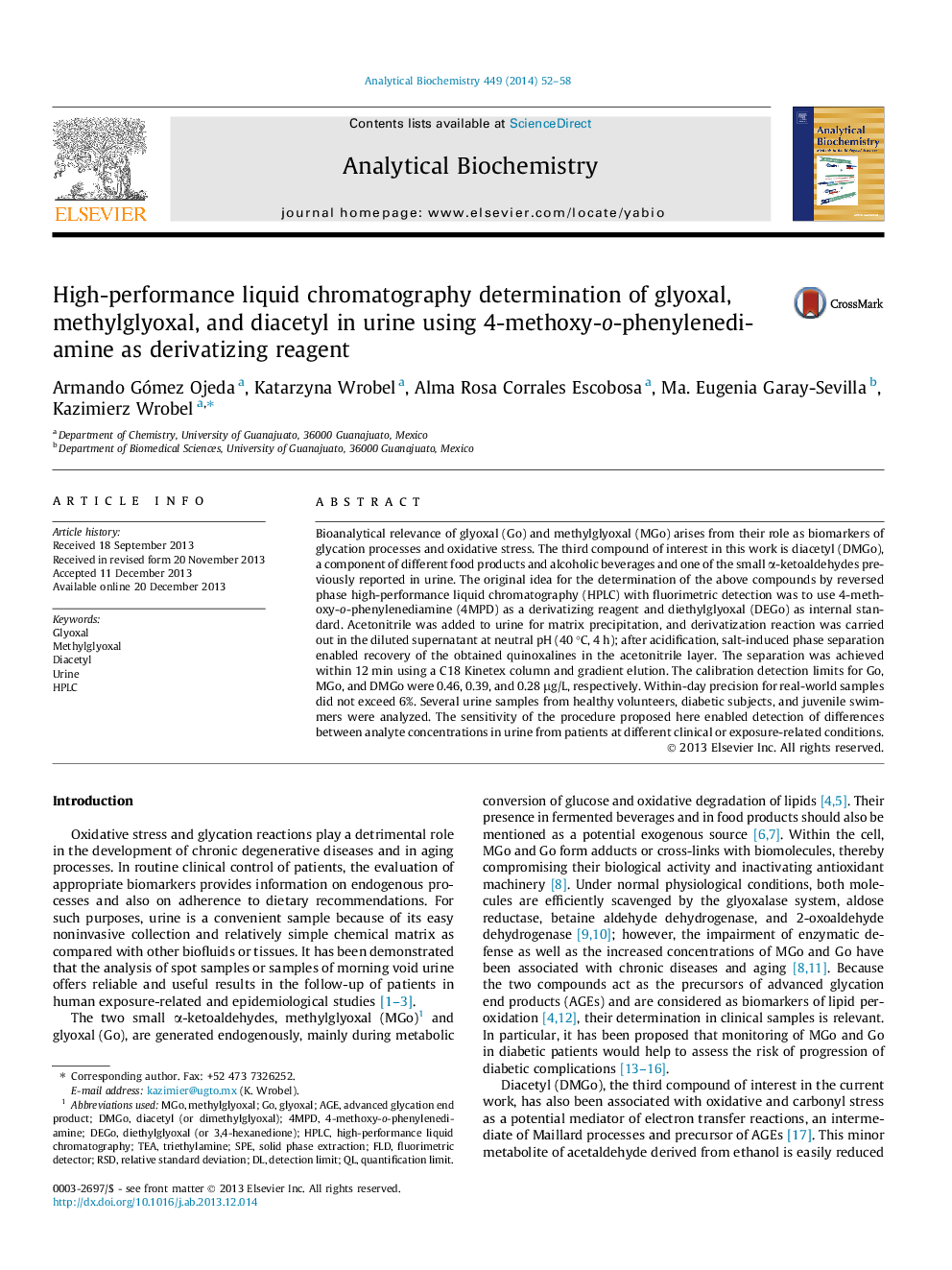| Article ID | Journal | Published Year | Pages | File Type |
|---|---|---|---|---|
| 1173404 | Analytical Biochemistry | 2014 | 7 Pages |
Bioanalytical relevance of glyoxal (Go) and methylglyoxal (MGo) arises from their role as biomarkers of glycation processes and oxidative stress. The third compound of interest in this work is diacetyl (DMGo), a component of different food products and alcoholic beverages and one of the small α-ketoaldehydes previously reported in urine. The original idea for the determination of the above compounds by reversed phase high-performance liquid chromatography (HPLC) with fluorimetric detection was to use 4-methoxy-o-phenylenediamine (4MPD) as a derivatizing reagent and diethylglyoxal (DEGo) as internal standard. Acetonitrile was added to urine for matrix precipitation, and derivatization reaction was carried out in the diluted supernatant at neutral pH (40 °C, 4 h); after acidification, salt-induced phase separation enabled recovery of the obtained quinoxalines in the acetonitrile layer. The separation was achieved within 12 min using a C18 Kinetex column and gradient elution. The calibration detection limits for Go, MGo, and DMGo were 0.46, 0.39, and 0.28 μg/L, respectively. Within-day precision for real-world samples did not exceed 6%. Several urine samples from healthy volunteers, diabetic subjects, and juvenile swimmers were analyzed. The sensitivity of the procedure proposed here enabled detection of differences between analyte concentrations in urine from patients at different clinical or exposure-related conditions.
